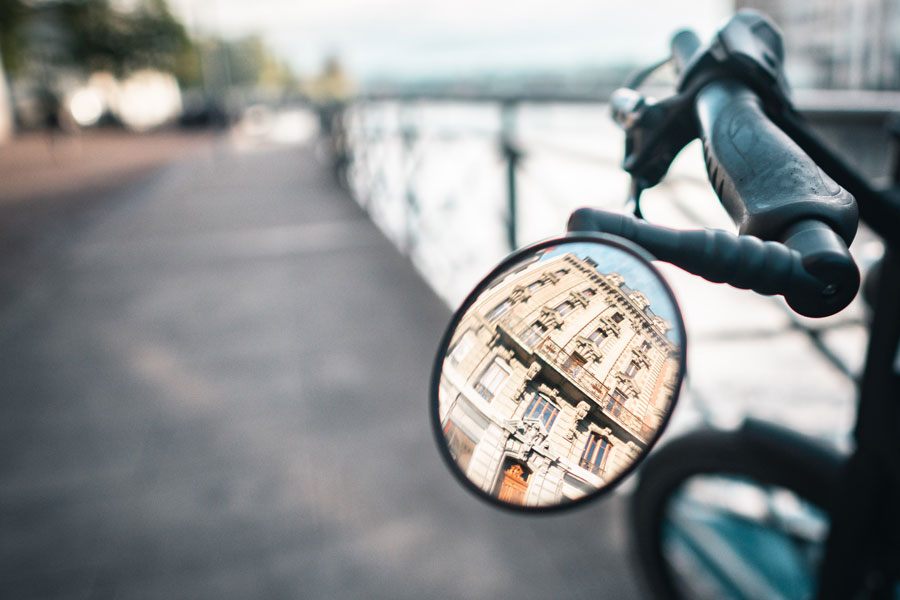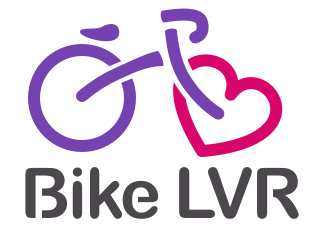
With all of the focus on safety in the cycling world, one topic draws some pretty serious debate: bicycle mirrors. If you’re a new rider trying to sort out everything you need for a safe and fun riding experience, you have probably wondered whether you should add a bike mirror to your kit. When you ask the question in certain circles, a rather heated discussion follows.
Opinions can be strong on the necessity of this one simple piece of safety equipment, and it can lead to heated debates. Instead of facing the confusing onslaught, this article provides the lowdown on why you may want a rearview mirror for cycling and what options you have.
Are Bicycle Mirrors Really Necessary?
This question seems like an easy one, rather than one that incites arguments. It’s a safety feature that can prevent accidents on the road. That said, you’ll find that not everyone feels it is necessary, and it might not be in every situation. You see more commuters using them than any other type of rider, including road cyclists. Seasoned road riders often feel they don’t need to use a mirror, even though they ride in traffic.
Mountain bikers also don’t feel the need to wear one, which makes some sense. They aren’t contending with motorized traffic. Though they’re more likely to crash, it’s because they run into or over something that stops them in their tracks rather than something running into them. Likewise, if you only ride on multipurpose trails, you may find a bike mirror is unnecessary. For anyone who contends with motorized traffic, there are significant benefits to having a rearview mirror.
Navigate Traffic Better
In areas where there is more traffic, it’s impossible to know what the cars are doing around you from just the sound of them. Drivers aren’t always aware of cyclists and frequently pay more attention to what other drivers are doing than bike riders. They also frequently don’t see cyclists in their paths when making turns.
When you’re in more heavily trafficked areas, a rearview mirror is handy. Knowing what is happening behind you helps you avoid more run-ins with cars. If a car has its turn signal on, you can move into the driver’s line of vision before he moves over into your lane. If need be, you can also bail off the road entirely if it’s clear that the driver doesn’t see you.
Spot Cars Sooner
Cyclists often rely on their sense of hearing to determine when a car is coming up behind them. If you’re on a road that sees very little traffic, that may work most of the time. However, you can’t count on it entirely. Ambient noises in the environment may cover up the sound of an approaching car until it is right on top of you — hopefully, not literally.
Furthermore, modern cars are getting much quieter. Have you ever listened to the engine of a hybrid or electric car? If the vehicle is running on battery alone, it doesn’t even sound like the car is running! When riding through neighborhoods, these types of cars don’t make much noise at all.
Steer Straighter
Without a mirror, it is necessary to turn your head and look over your shoulder to see what’s coming. As a result, you naturally veer into the direction you are looking. So, if you are checking to see if a car is coming, you tend to steer your bike right into the line of traffic. If a car is approaching, then you put yourself right in its path. Needless to say, this sets up a dangerous situation.
The tendency to veer is pretty much unavoidable, as is the need to check for traffic. You can’t rely on your ears alone when you need to move over to get around a parked car or make a left turn. Using a bike mirror allows you to quickly check for approaching cars before making a move. There is no need to look over your shoulder, so you can continue to steer your bike in a straight line until you’re sure the coast is clear.
Are There Different Types of Bicycle Mirrors?
There are three basic kinds of bike mirrors: handlebar, helmet, and eyeglass. Each type has several different styles with advantages for different bikes or rider preferences. There are general pros and cons for all three that can help you decide which is the best option if you’re considering a bike mirror.
Handlebar Mirrors
Handlebar mirrors attach to your bike, so once you put them on, they stay there.
The Pros:
- They’re easy to use.
- They have a big viewing area.
- They’re more durable than the other two types.
The Cons:
- They get knocked out of alignment easily.
- They are located further from your line of vision.
- The view in the rearview mirror changes with the direction of your handlebars.
Helmet Mirrors
These mirrors attach to your helmet, but they’re easily removable.
The Pros:
- They’re lightweight.
- Turning your head to see in different directions is safer than turning your handlebars.
- They’re easy to attach and detach as needed.
The Cons:
- They bend or break easily.
- The viewing area is smaller.
- You have to be careful with what you do with your helmet unless you detach the mirror every time you take your helmet off.
Eyeglass Mirrors
These mirrors are probably the type you’ll see least often on riders, but they are available.
The Pros:
- They attach and detach easily.
- Some brands offer the versatility of mounting to glasses or helmet visors.
The Cons:
- They aren’t very durable.
- The viewing area is tiny.
When it comes down to it, a bike mirror is another tool that can help keep you safe for many different driving conditions. They are also very affordable, so they aren’t a big investment, especially considering the potential benefits. Most mirrors cost between $10 and $20, so even if they break, replacing them won’t break your bank. BikeLVR is as passionate about making biking fun, but we also want riders to be safe. We’re here to help in any way we can. Feel free to give us a shout if you have any questions you’d like to ask us.
